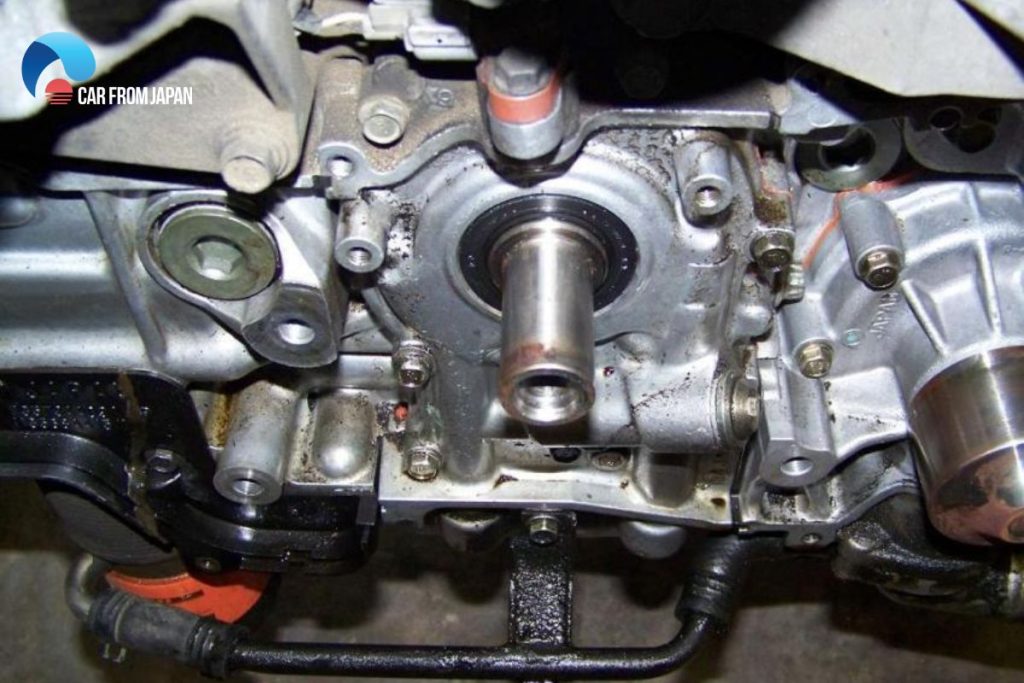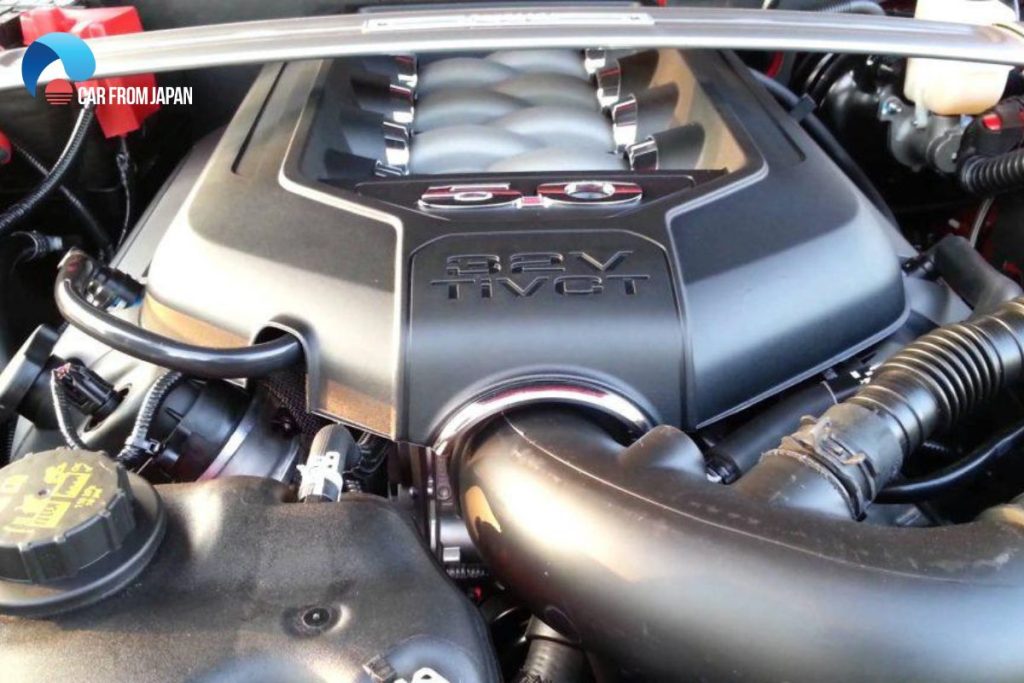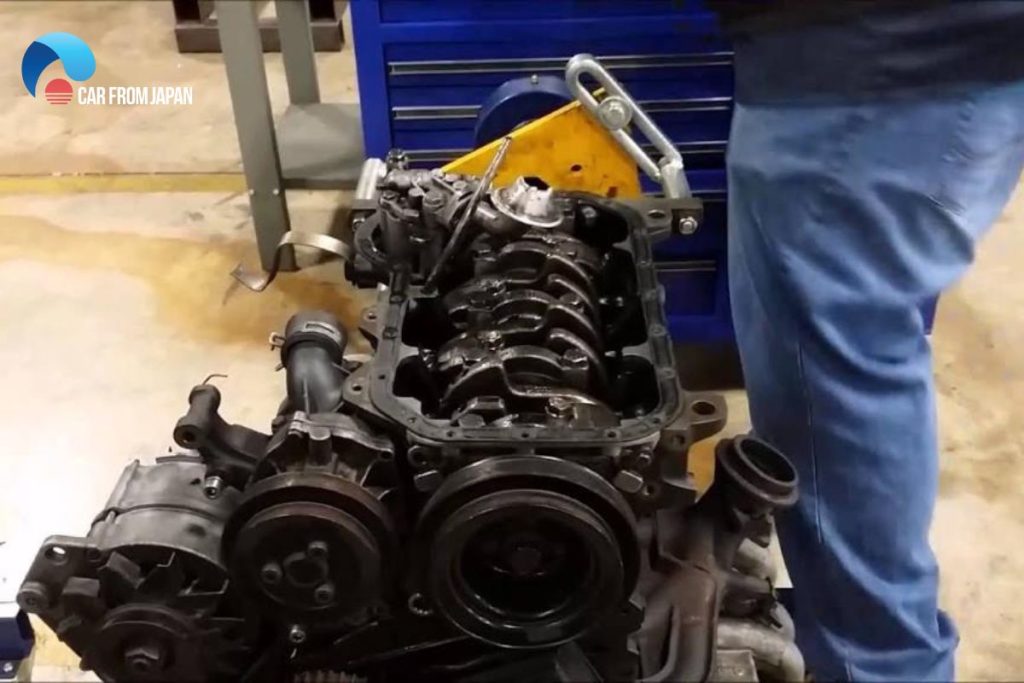Have you ever heard a strange noise coming from your engine? Or noticed a sudden drop in oil pressure? These could be signs of a failing engine oil pump, a problem that can quickly escalate into a major repair if we don’t change it on time. What are the symptoms indicating that your engine oil needs to be replaced?
Contents
Bad Oil Pump Symptoms Before Replacing
There are many warning signs to tell you that your oil pump is about to fail. Knowing about them will help you identify the problem before it becomes too serious. Let’s learn about five of the most common signs:
A drop in oil pressure
The pump regulates the pressure as well as keeps the engine parts lubricated by supplying oil to different parts.
So, it makes sense that when that machine starts wearing, it cannot dispense oil properly. The result will be a decrease in oil pressure that will eventually lead to frequent stalling of the vehicle.
Increase in engine temperature
Proper lubrication is what reduces the internal friction between different parts and thereby helps to keep the motor cool.
When the pump starts wearing, it cannot grease the components properly. Improper oiling will increase the resistance and the rate of moving parts rubbing against each other, leading to an increase in engine temperature at the time of driving.

Noisy hydraulic lifters
These instruments are not supposed to make any noise at all. The lifters need adequate oiling to function quietly.
So, if you hear a clanking sound coming from under the hood, it’s better to assume that there’s a problem with the oil supply, i.e., the engine oil pump.
A loud valve-train
The valve-train system can be aptly called the life force of the engine. It keeps your car running and consists of many critical components that rely on a proper oil flow to function correctly.
A faulty pump does not supply them with adequate lubrication, making all the parts quite clamorous.
Low sound from the engine oil pump
It’s a rare case, but it happens nonetheless when the pump is about to fail. Listen carefully to hear if any whirring or whining sound is coming from under the hood.
It typically happens when the vehicle is idling. It’s a sign of the deterioration of the pump’s internal gears.
How To Test An Engine Oil Pump To Replace On Time
We now know that an oil pump failure can result in serious issues with your engine, therefore, you should understand how to test for oil pump failures so you can repair the pump as soon as any problems appear.
Follow the steps in the following process to check for a faulty oil pump.
Stop the car
When the low oil light appears on the dashboard, you should pull over and use a deep stick to check the oil levels. And when you find that the oil levels are lower than what is ideal for your automobile, top them off. Start your car again and pay attention to any of the article’s listed signs of a malfunctioning oil pump.
Examine the engine’s oil pressure measurement unit

There can be an issue with your car’s measuring and communication system if the low-pressure light on the dashboard stays on even after you replace the engine oil.
A leaky hole where oil enters the system or a wiring issue may create bad communication.
If you detect strange noises coming from your engine even after adding more oil, and you don’t have a rheostat or other electrical issue, you should check the oil pressure of the moving vehicle.
Using a gauge, check the engine oil port pressure
After determining that your oil pump is malfunctioning as a result of the dashboard light remaining on, put the oil pressure gauge appropriately on the engine’s oil port.
To see whether there are any differences, verify and compare the pressure reading with the suggested pressure for your vehicle type.
Your transmitting unit has an issue if your readings seem to be OK. Before testing the pump once more, you should inspect and clean your oil filter if you are getting low-pressure readings.

FAQs on An Engine Oil Pump
Where is the oil pump located?
The engine of the car’s lubricating system is the oil pump. The bottom of conventional wet sump engines has a single oil pump that is either below or next to the vehicle’s crankshaft.
Because they are directly powered by the crankshaft, oil pumps are positioned near to the crankshaft to push oil from the oil pan to circulate throughout the engine before returning to the sump.
What will happen if I drive while using a bad oil pump?
Long-term driving with a failed oil pump puts the crankshaft and camshaft bearings at risk of damage. Driving with a defective oil pump also indicates a lack of lubrication, which may harm the vehicle’s hydraulic lifters.
What is the oil pump’s expected lifespan?
The car oil pump may last between 60,000 and 70,000 kilometers with the right care and maintenance. However, it relies on several variables, including your driving style and the quality of your car’s components.
What you can do to prolong the life of an oil pump is as follows: Watch the oil pressure gauge closely.
How long does it take to change the oil pump?
How quickly you can swap out a bad oil pump depends on your knowledge, expertise, and the effectiveness of your mechanic toolkit.
We advise hiring a trained mechanic to replace your oil pump even if you may save a significant amount of money by doing it yourself. Your oil pump replacement will take a skilled mechanic just over an hour.
Check out this video from Vehicle Freak to get more details about symptoms of a bad oil pump, the causes, fixes, and the oil pump replacement cost!
Conclusion
You can change the engine oil pump if it starts showing signs. It should last somewhere between 60,000 and 70,000 miles in a properly maintained and regularly serviced vehicle.
By being aware of the symptoms – unusual noises, low oil pressure, overheating, and warning lights – you can catch the problem early and potentially save yourself thousands of dollars in repairs.
Remember that ignoring the signs for a long time will result in significant damage to the internal system of your car.




Thanks for sharing the article! I’m Mechanic too, as per my modest experience you are absolutely right. A look at the three main signs that you need to fix or change your oil pump: low oil pressure, high engine temperature, and noise. … Most likely the first symptom will be your engine or oil light indicator on your dashboard coming on to alert you there is a problem.
We have an Audi 2011 and are having an oil pressure problem. Indicates low pressure turn engine off. After having it diagnosed both mechanics indicate a new engine. Our extended warranty people state it’s normal wear and tear but after doing my own research I’ve found that with audi’ Especially 2011 this is a major defect, and not due to wear and tear. What if anything you can provide me with to bring to the warrenty company. Please advise
Thank you